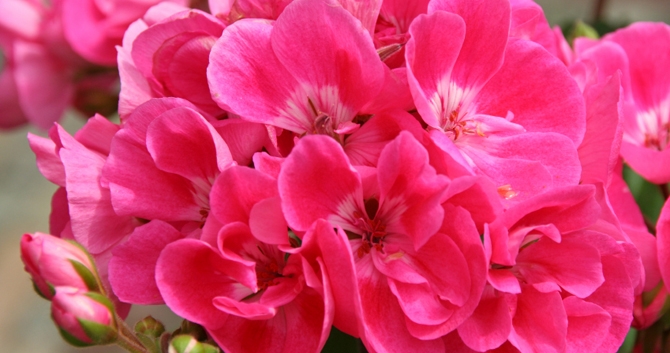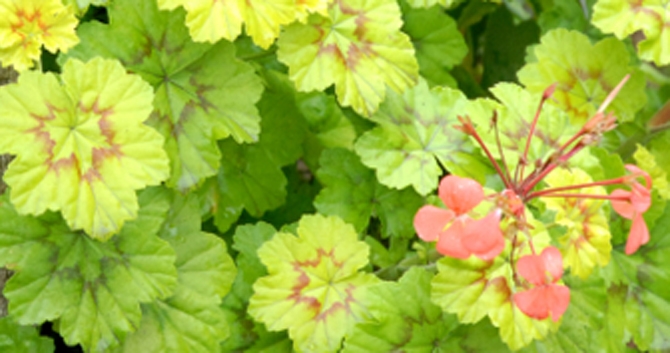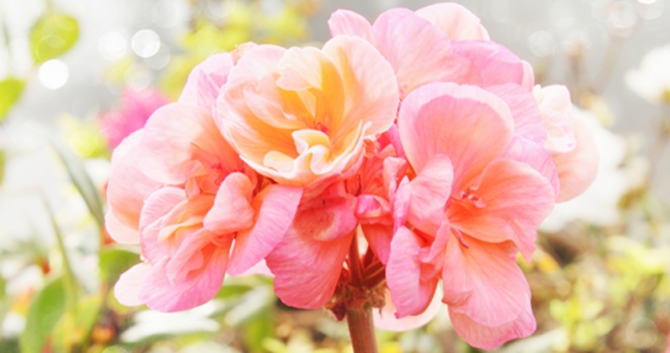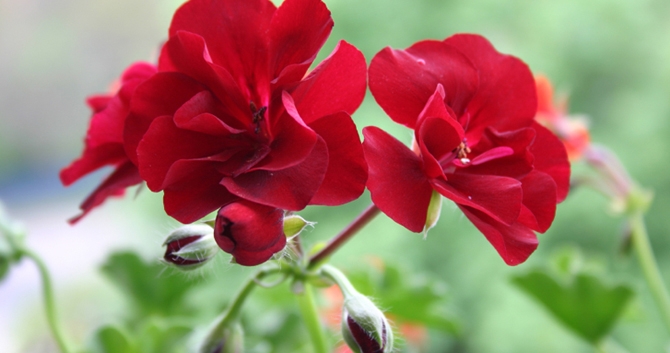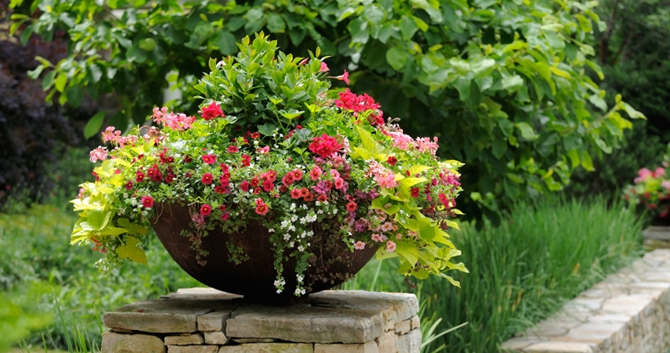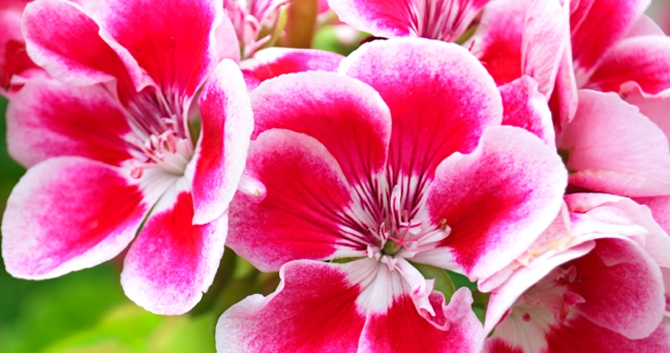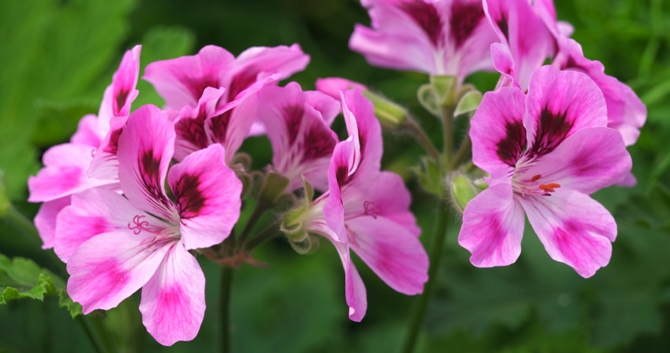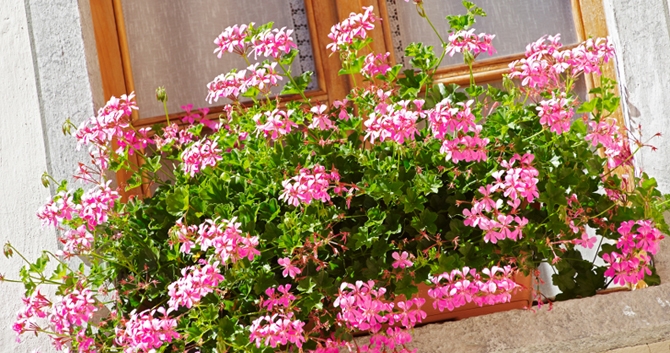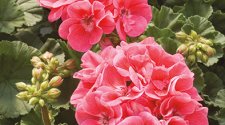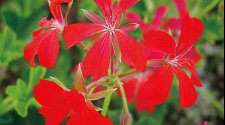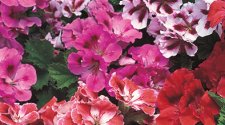Whether you are a first time gardener or a green thumbed veteran, geraniums are a must for any garden bed, flower box, hanging basket or decorative pot. Besides their obvious beauty, gardeners love geraniums because they’re very easy to grow indoors and out. These colorful flowers make a charming addition to any home –with cheerful blooms from late spring through early fall! Be sure window boxes and containers have good drainage
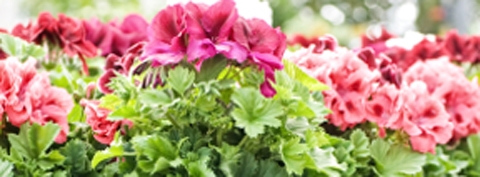 Zonal geraniums have a place in any garden indoors or out!
Zonal geraniums have a place in any garden indoors or out!
Geraniums originated in the Cape of Good Hope region of South Africa and belong to the genus Pelargonium, which means “stork” in Latin. Introduced in Europe in the late 1600’s, they were widely cultivated for their beautiful blooms, fragrant oils, and medicinal uses. Today, they’re found in temperate regions all over the world, especially in the eastern part of the Mediterranean where it seems every doorway and window has a planter spilling over with colorful geraniums.
Pelargoniums can’t tolerate frost and are grown as annuals in most regions. There are also perennial geraniums that can tolerate colder temperatures.Types of Geraniums
With the wide variety of geraniums available today there’s something for everyone! Whether your garden gets full sun or part shade, there are geraniums for just about anywhere you need a pop of color. Their clusters of funnel or star-shaped blooms in shades of orange, red, white, pink, fuchsia, or purple pair perfectly with other summer annuals and perennials.
Zonal geraniums are the ones you typically find at the garden centers in an array of irresistible colors - magenta, lavender, pink, orange, red, and white. Their bright green ruffled leaves have small rings of darker green inside the margins for added contrast and color. Zonal geraniums love the summertime and thrive in full sun. A classic combination of geraniums, dusty miller, and alyssum in a planter or window box transforms any house into a summer cottage.
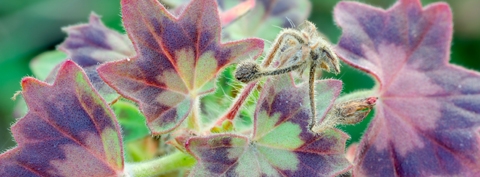 Fancy-leaved geraniums have colorful leaves almost as pretty as their blooms
Fancy-leaved geraniums have colorful leaves almost as pretty as their blooms
Stellar geraniums are small and bushy with beautiful star shaped blooms. Unlike zonal geraniums, they grow well in southern regions and don’t like full sun. Perfect for spots in your garden where other annuals struggle, stellar geraniums add vibrant color to garden borders when planted with lobelia or flowering tobacco.
Scented geraniums perfume the breeze with citrus, rose, apple, or peppermint. The flowers are generally smaller than other varieties, but the scent is intoxicating! Combine with pentas, impatiens, or petunias for added color. Plant scented varieties in full sun to release their fragrant oils.
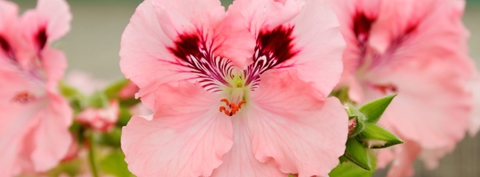 Geraniums have clusters of beautiful blooms in irresistable colors.
Geraniums have clusters of beautiful blooms in irresistable colors.
Fancy-leaved geraniums are a sub-category of zonal geraniums that does well in part sun or part shade. These geraniums have variegated leaves in shades of green, yellow, rust, and rose that add color even when plants aren’t flowering. Pair with blue-green fountain grass to add a nice contrast to the bright flowers and colorful leaves.
Ivy geraniums spread readily in cascades of color spilling over the sides of any container. If you’re looking for a geranium that looks great in a window box or hanging basket, look no further! They don’t tolerate the hot sun and are best planted in in an east-facing location.
Care Tips
Geraniums thrive indoors on a sunny windowsill or outdoors in containers and garden borders, as long as they get enough sun and water. In general, they need at least six hours of sun and like the soil to dry out slightly between waterings.
Geraniums will grow in most any type of soil as long as there is good drainage. In containers and window boxes, use equal parts of garden soil, peat moss, and pearlite. In garden beds, mix in organic matter to improve the soil quality.
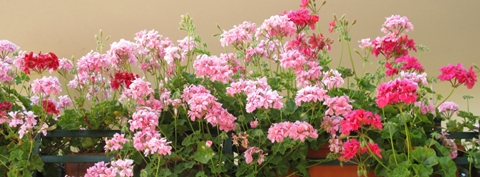 Window boxes filled with geraniums add cottage charm to any house.
Window boxes filled with geraniums add cottage charm to any house.
Plant geraniums outdoors after danger of frost is past, setting plants in the soil at the same depth they were growing in the pot. As your geraniums grow they may need repotting later in the season if they have grown very large and begin to wilt in between watering.
For prolific blooms and full leaves all season long, fertilize outdoor plants every two weeks throughout the summer with a water soluble fertile. Fertilize indoor plants every month in the spring and summer and every other month in the fall and winter.
Troubleshooting
Geraniums are easy to grow and generally have few problems, but like all plants, they may need some attention every now and then. Most problems are easy to solve with some minor adjustments in terms of water, fertilizer, and light conditions.
Spindly or leggy plants – your geraniums aren’t getting enough sunlight. Move them to another spot and they should recover.
Buds dry up and drop off – plants are overwatered or the humidity level is too high. Let your geraniums dry out between watering and be sure the pot is draining adequately.
Yellowed lower leaves – plants need fertilizer. Use an all-purpose garden fertilizer as directed on the package.
Little or no blossoms – this may be caused by too little sun, overfeeding, or excessive heat. Stop fertilizing and move the plants to a sunnier spot if they still aren’t blooming.
Reddish leaves – temperatures are too cold. Move them indoors.

